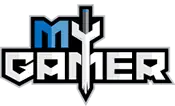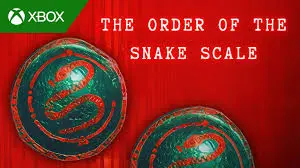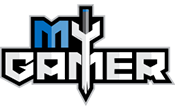After actually enjoying a license game (specifically, .hack//G.U. ), it was only appropriate that I get reacquainted with why this sub-genre is so maligned by playing the antithesis of //G.U.; something that didn’t have a strong cast of characters, detailed story or even a well-defined goal. That game is Digimon World: Data Squad. Digimon World: Data Squad did a great job of reminding me just how bad an anime-based game can be. But like all games, there is some good and some bad.
We all remember the original Digimon. Those little keychain critters that begged for food, not that they were ever short of it since the only thing you could do with them was give them food. But past that was a relatively simplistic, yet still-interesting concept, which was breeding and raising and honing and evolving an endless circle of beasties for battle. DWDS abandons this, and puts the player in the shoes of Marcus Damon, who is quite possibly the most feminine, definitively heterosexual, lead character to ever appear in a video game or anime, ever. Marcus is part of the “Data Squad” a group who slides in and out of the Digimon World, an elaborate construct of fragmented data collecting on a global level (make sure to run the disk defragmenter regularly, people). Somehow, Digimon are sliding into the real world and causing all sorts of property damage (it’s rated E, so nobody dies) and Marcus and his pals are tasked with bringing the battle to the Digimon on their own soil. Marcus and his Digimon partner, Agumon, are sent on missions to neutralize these threats, while dealing with all the silly intricacies of a typical anime character’s life.
As said, instead of focusing on the menial tasks involved in raising a monster designed for killing your enemies (which revolved around feeding them thirty times an hour and cleaning up their crap), DWDS takes the route of a relatively traditional turn-based RPG. The combat is fairly typical. There’s an attack, guard, support and flee option. The problem is, behind this seemingly simple battle engine is a convoluted system that dictates what your Digimon partner WANTS to do. Not what is the best move, not what the game would recommend and not what YOU want to do. No. It is what the imaginary monster you own wants to do. Unfortunately, it isn’t uncommon that the Digimon wants to cut and run, which often necessitates burning a turn to cheer it on. While the battling wouldn’t have been especially great even if this elaborately incorporated series of annoyances was omitted, it ends up going from bad to awful in DWDS. The evolving of the Digimon is not a complicated balancing act like in other Digimon entities. Though it just ends up being an “either or,” with the “or” not being different enough that it is worth the statistical balancing act required for precise results. Because of this, DWDS goes from being mediocre to being annoying and couple this with frustrating load times on overly-common random encounters and you get a game that isn’t even coaster-worthy.
Graphically, DWDS is pretty bad. Characters are all cell-shaded, thickly-outlined blobs that look alright for an anime-themed game. While this would typically be acceptable, the below-average presentation and deficient level design end up making this one of the ugliest PS2 games in the last couple years. The audio doesn’t help, either. With subpar voice acting and SNES-quality music, the game is brutal on both the eyes and ears. To the game’s credit, NamcoBandai did a pretty good job with localization.
All in all, there’s very little reason to get Digimon World: Data Squad. Between the simplistic-yet-frustrating battle system and the absolutely terrible graphics, there just isn’t anything positive to say about the game. It’s a low-budget game, at a budget price, that only younger kids have a chance of enjoying. If you’re looking for an RPG to dabble around with the PS2’s new game library steadily dropping, you should just check out the .hack//G.U. series.
President & CEO














Leave a Reply